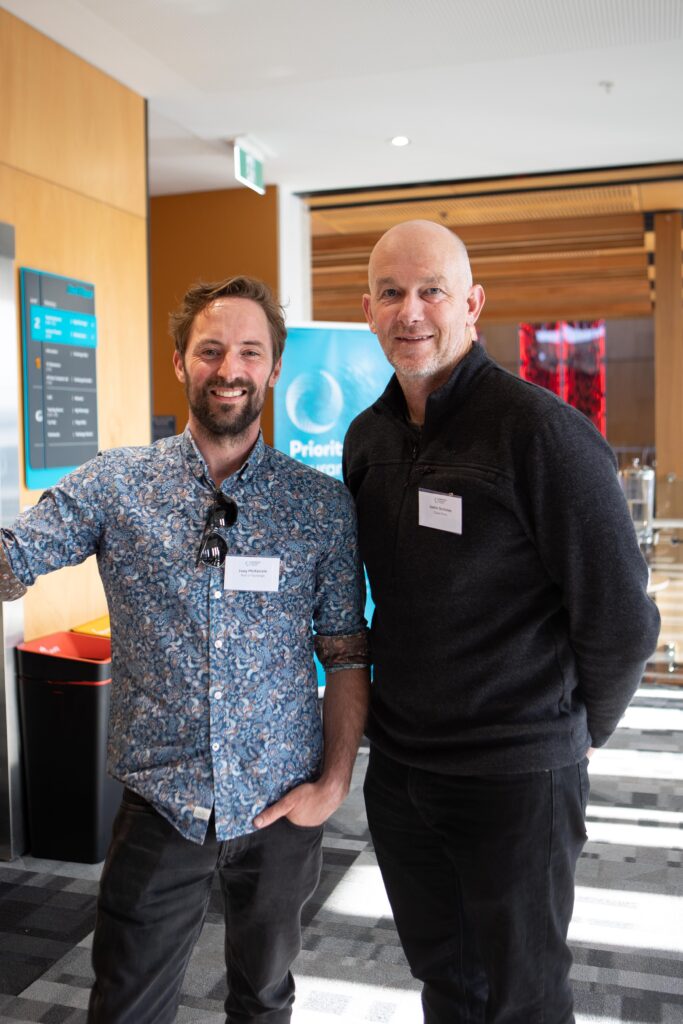Latest News

Joey McKenzie was a born, bred and educated in Tauranga, including a degree in environmental science. He moved away to start his career but has since returned as Environmental Manager at Port of Tauranga – where his grandfather once worked. We speak with Joey about his career journey, his wide-ranging role, and the innovative port projects he’s currently leading.
How did your career path lead you to your current role?
After university, I was keen to see something different, so I lived in Cromwell and worked for Otago Regional Council. From growing up in Tauranga to living in the most landlocked place in New Zealand – it was quite a big shift. From there, I went to Whangarei because I’d done a bit of work as a dive instructor and I wanted to be there for the diving and the lifestyle.
I got a great job with Northland Regional Council in Resource Management Act compliance – it came with a lot of hands-on monitoring, water quality monitoring in particular. Because it was a smaller council, we got involved in a variety of different jobs, including incident response, working on the front line with communities, investigation work, and enforcement work – and for me, even some resource consent processing. After three years, I stepped up to a management position, and after another three years, home was calling.
There was a time where I thought, ‘I don’t want to go back to Tauranga – it’s just changed so much’. But I found that it’s still got that charm. I also really questioned whether I wanted to work in the private sector. But when I met with the Port, it was authentic. It was very clear they wanted to do things right and they were willing to put in the resource to improve. There was a huge amount of opportunity. That was the main reason I decided to take the job.
What does the role of Environmental Manager entail?
Environmental management here is so much more than me. We are a team of five, so we’ve come a long way since January 2018, when I was the first person on board. We have relationships across the whole business and we work to help everyone move forward. The port also has a vast number of different port users, contractors and third-party providers, and we engage with them a lot as well.
We have a continuous improvement mindset and one of the things that I really value is using monitoring to inform decisions. There’s a lot of data collection at the front end – that might be through monitoring equipment (the science geek in me really enjoys looking at the graphs) but it also could be someone on the ground, just observing and inspecting. From there, we can analyse data, strategise how we can do things better and implement changes.
A big role of the team is identifying and setting the appropriate procedures for port users to follow in order to minimise environmental effects. Then it’s the monitoring of those procedures, making sure that they’re still appropriate or whether they need to be refined. There’s a lot of auditing.

Can you give us some examples of key environmental initiatives at Port of Tauranga
There’s a large amount of work that goes on in terms of managing and improving air quality. For example, we have a comprehensive dust management plan for stevedores unloading bulk cargo products on the Mount Maunganui wharves – a set of procedures that identifies how equipment should be operated and what wind conditions they can operate under. Our data shows the dust levels are reducing over time.
We also do an extensive amount of work around managing and improving water quality. We’re currently building a new stormwater treatment system. Initially, we utilised automated sampling machines to collect stormwater throughout multiple rain events. We identified the first flush of stormwater – the dirtiest part at the start of a rain event – and through infrastructure, we’re going to capture it, pump it into a million-litre above-ground tank, then treat it through a clarifier system. The cleaned water can then flow to the harbour.
Greenhouse gas emission reduction opportunities are a big focus for the team. That was a small part of my job when I started, now I’ve got a team member who undertakes a large amount of work in this area. There are some great projects underway and we’ve identified ways to significantly reduce emissions from our business. We have received EECA funding to support a trial of the country’s first full electric straddle carrier for container handling. We worked together, pulling in various parts of the business to make that happen – it’s a great win.
A big piece is environmental risk management – it’s about trying to prevent bad things from occurring, such as spills. The Port can be a high-risk working environment, so it’s about identifying better ways to do things. Like health and safety, it’s about reducing risk, and change management is a big piece of the job.


What future environmental challenges do you see for the port?
A big challenge for us, I think, is making sure that we are ready to respond to whatever comes our way. A good example would be the uncertainty about lower-emission fuels for shipping in the future – so making sure we’re able to adapt to whatever direction is taken by the maritime industry and to meet our customers’ needs.
This is a challenge for the entire freight and logistics industry as we work to reduce emissions and move towards a low-carbon future. I’m a part of Priority One’s Energy Leadership Group and these are the strategic issues we will be looking at for this region.
If you want to learn more about Priority One’s energy work, visit our site to see our resources and sign-up for energy news and upcoming free workshops.
